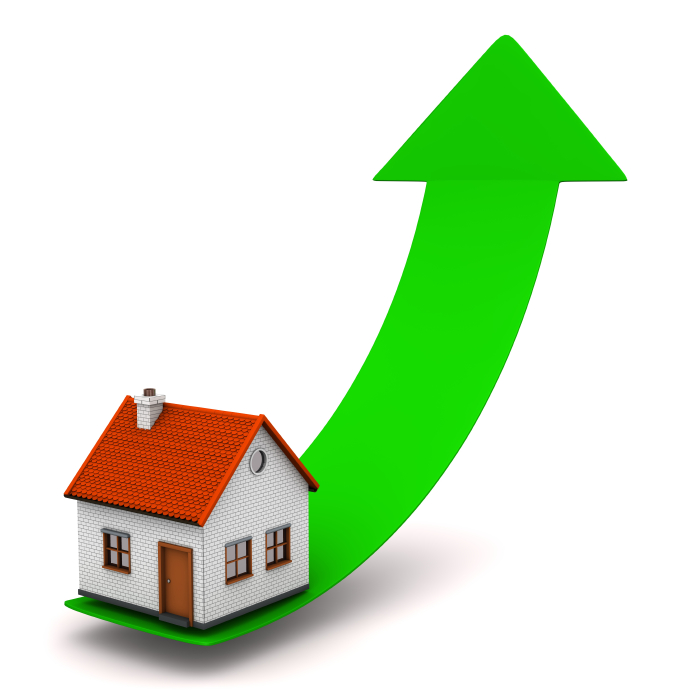Home » Uncategorised »
Fastest Annual Rent Increase Since 2010
This article is an external press release originally published on the Landlord News website, which has now been migrated to the Just Landlords blog.

Rents in England and Wales rose 4.6% in the year to April 2015, found the latest Buy-to-Let Index from Your Move and Reeds Rains. This is the fastest annual increase since November 2010.
In absolute terms, rents are now at a record high. The average rent in England and Wales in April was £774; the most expensive ever witnessed.
In monthly terms, rents increased by 0.8% between March and April, the fastest month-on-months growth since September 2014.
Director of estate agents Your Move and Reeds Rains, Adrian Gill, says: “Rents are going skywards and still accelerating. That momentum is fuelled by a fundamental shortage of housing and given oxygen by renewed wage growth.
“Economic progress has brought about a slow but steady stream of household earnings and employment; the most basic requirements for rent rises. Placed in the context of the UK’s pressure-cooker housing shortage, these modest improvements have driven rents up at record speed.
“This should be a loud and clear signal to the authorities that home building is more than just manifesto-fodder. People have more money in their pockets, but we’re in danger of seeing that recovery squandered away on a housing shortage.
“With the surprise of a relatively strong majority Government, there has never been a better time to take the bull by the horns and fix this housing crisis at the root. When you hear a kettle whistle, you take it off the hob.”
Regionally, the East of England experienced the highest rent rises on an annual basis. Since April 2014, rents increased by 12.5%, up from 12% annual growth in March 2015 and 10.2% in the year to February 2015.
Second was London, with 7.8% annual growth. This compares to 5% in the 12 months to March and 4.9% in February.
Yorkshire and the Humber was third with a 2.2% annual rise.
Contrastingly, rents in Wales are 2.8% lower than in April 2014. Rents in the North East have dropped by 0.8% and the East Midlands has seen rents fall by 0.2%.
In monthly terms, London has seen the strongest growth, of 2.3% from March to April this year. The South West was second with rents rising 1.1% in the past month and the West Midlands followed with a 1% increase.
Wales also experienced the highest monthly decline, of 1.8% from March to April. In both the North West and North East, rents dropped by 1.4%.
Gill continues: “The East of England has witnessed rapid growth in property purchase prices and rental prices have taken a similar course, albeit even faster. Away from the East, London is the real figurehead for the housing dilemma. Leading the way for both the positive story of wage growth and the essential challenge of overcrowding makes the capital a potent emblem for the wider issues facing the nation.
“Rent rises tend to follow wage growth, so it’s no surprise to see this clustered around the South. However, this could change if demand for jobs and homes in northern England starts to catch up with supply in a similar way.
“For example, if George Osborne’s commitment to the northern powerhouse stimulates more investment in infrastructure and more jobs, that will boost the success of places like Manchester. But the housing supply crunch could spread to northern cities if space isn’t found for homes too.”
Rental returns
The gross rental return on the average rental property in England and Wales was 5.1% in April 2015, a steady figure from the 5.1% yields of March 2015 and April 2014.
However, total returns have dropped due to slower house price rises. Considering property price changes and void periods, total annual returns on a typical rental home was 8.9% over the year to April, before costs such as mortgage repayments or maintenance. This was 10.2% in the 12 months to March and 11.5% in April 2014.
In absolute terms, the average landlord in England and Wales has received a return – before deductions such as mortgage repayments – of £15,503 in the last year. Rental income accounts for £8,247 and capital gains makes up £7,256.
Predictions for the future are unreliable at present, but if current trends continue, the next 12 months to April 2016 could see an average return of 3.4% or £6,256. Rental income would make £9,292, but capital growth would be negative, causing a decrease of £3,036. This is based on prices in the last three months.
Gill comments: “Price dips in recent months are unlikely to continue for a long time, which makes predictions for the next year more difficult than usual. However, rising prices should always be seen as a bonus for landlords rather than something to be relied on, and recent cooler price growth underlines that need for caution.
“However, rapid rent rises will matter most to landlords and in time will put upwards pressure on yields. Rents have now risen faster than prices over the course of 12 months and that improving prospect of a steady rental income will be the positive deciding factor for those considering new property investments.
“Most encouraging for landlords will be the seeming affordability of the latest rent rises, with arrears falling as a whole. Within that, there is still an overstretched core of tenants who struggle every single month and a persistent chance of these most hard-pressed households falling more seriously behind on rent.
“This left-behind minority needs to be tackled somehow and dealt with sensitively by landlords in the meantime. But the overall trend is clear and indicates that one factor behind faster rent rises is improving household incomes.”
The latest Tenant Arrears Tracker from Your Move and Reeds Rains found a 4% rise in serious rent arrears cases. Read more here: /cases-of-serious-rent-arrears-up-4/.
Gill concludes: “On average, the nation’s finances are improving as more and more people manage to make their way into rewarding employment and this appears true for the one in five UK households who now live in privately rented homes.
“But at the same time, a smaller minority are still struggling to get their living costs under control, even in the face of the wider recovery. That persistent monthly scramble is reflected in those most seriously behind on rent payments, who still face losing their homes in their thousands.
“This number has improved too over the longer term, but it should act as a warning shot against complacency and a call to action in the struggle to support more new homes across all tenures.”




